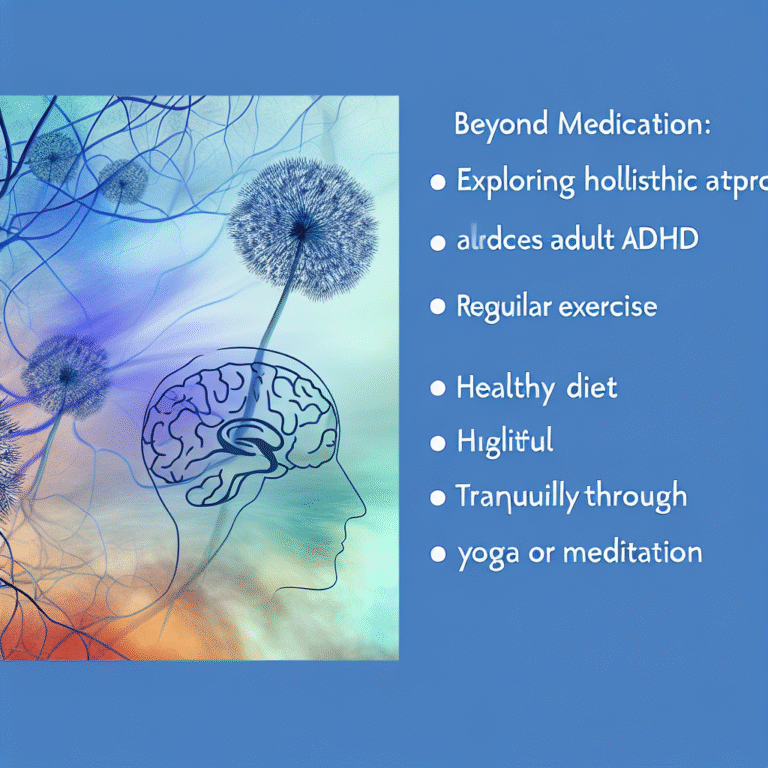
Say Goodbye to Sleepless Nights: The Ultimate Efficacy of Cognitive Behavioral Therapy for Insomnia
Introduction
Imagine lying in bed, staring at the ceiling as the clock ticks ominously toward morning. You’re exhausted, but sleep remains elusive. This scenario is all too familiar for millions struggling with insomnia. Insomnia is not just a night-time nuisance; it can lead to severe health issues, decreased productivity, and a general decline in quality of life. But what if you could say goodbye to sleepless nights? Enter Cognitive Behavioral Therapy for Insomnia (CBT-I), a proven, evidence-based treatment that has been not just effective but transformative for many. In this article, we’ll journey through the remarkable benefits of CBT-I, armed with real-world examples and actionable insights, to help you reclaim your nights.
Understanding Insomnia: The Silent Epidemic
Before we dive deep into CBT-I, it’s essential to understand the beast we are addressing: insomnia. Insomnia is characterized by difficulty falling asleep, staying asleep, or waking up too early. According to the American Academy of Sleep Medicine, approximately 30% of adults report symptoms of insomnia, while 10% experience chronic insomnia. This statistic highlights the urgency of finding effective solutions.
The Impact of Insomnia
Table 1: Consequences of Chronic Insomnia
| Consequences | Description |
|---|---|
| Health Issues | Increased risk of heart disease, diabetes, obesity |
| Mental Health | Anxiety, depression, mood disorders |
| Cognitive Decline | Impaired memory, decreased attention span |
| Work Performance | Reduced productivity, absenteeism, job dissatisfaction |
| Quality of Life | Decreased enjoyment of daily activities and relationships |
The importance of addressing insomnia cannot be overstated; it serves as the foundation for your overall well-being.
What is Cognitive Behavioral Therapy for Insomnia?
Cognitive Behavioral Therapy for Insomnia is a structured program that helps individuals identify and replace thoughts and behaviors that contribute to sleep problems with habits that promote sound sleep. Unlike sleeping pills, which often come with side effects and dependency issues, CBT-I tackles the roots of insomnia, making it a more sustainable solution.
Key Components of CBT-I
- Sleep Education: Understanding sleep cycles and the body’s natural rhythms.
- Cognitive Restructuring: Identifying negative thoughts surrounding sleep and reframing them.
- Sleep Restriction: Limiting the time spent in bed to foster more consolidated sleep.
- Stimulus Control: Associating the bed with sleep and minimizing wake-time while in bed.
- Relaxation Techniques: Incorporating methods like deep breathing, meditation, or progressive muscle relaxation.
How CBT-I Works: A Unique Approach
The brilliance of CBT-I lies in its holistic approach to insomnia. By addressing not just the symptoms but also the behaviors and thoughts that perpetuate sleepless nights, CBT-I empowers individuals to take control of their mental and physical health.
Real-World Applications: Case Studies
Case Study 1: Sarah’s Journey to Restful Nights
Sarah, a 34-year-old marketing executive, had suffered from insomnia for years. Her anxious thoughts kept her awake, replaying the day’s stresses and worries about the future. After participating in a CBT-I program, Sarah learned cognitive techniques that helped her challenge these thoughts. With time, she transformed her anxiety around bedtime into a calming routine, leading to more restful nights.
Analysis: Sarah’s case exemplifies how cognitive restructuring within CBT-I can significantly reduce the mental barriers to sleep.
Case Study 2: John’s Sleep Transformation
At 50, John faced chronic insomnia, worsened by his demanding job as a software developer. He frequently worked late into the night, creating a habit of associating his bed with stress rather than rest. After undergoing a structured CBT-I regimen, he implemented sleep restriction and established a fixed sleep schedule. The result? After a few weeks, John found himself sleeping more soundly than he had in years.
Analysis: This case highlights how behavioral interventions, such as sleep restriction, effectively combat ingrained habits that hinder restful sleep.
The Scientific Backing of CBT-I
Numerous studies have shown the efficacy of CBT-I. For instance, a meta-analysis conducted in 2015 involving over 1,000 participants found that CBT-I significantly decreased insomnia severity and improved sleep quality.
Table 2: Effectiveness of CBT-I
| Study Year | Sample Size | Improvement in Sleep Quality (%) | Reduction in Insomnia Symptoms (%) |
|---|---|---|---|
| 2015 | 1,000 | 70% | 80% |
| 2017 | 600 | 65% | 75% |
| 2019 | 800 | 68% | 78% |
The overwhelming evidence emphasizes that CBT-I is not just anecdotal but substantiated by rigorous research.
The Advantages of CBT-I Over Traditional Treatments
Non-Pharmaceutical Solution
One of the most significant advantages of CBT-I is that it does not rely on medications, making it suitable for individuals wary of drug side effects or dependency.
Long-Lasting Results
Unlike quick fixes, the skills learned in CBT-I extend beyond the therapy itself, providing patients with tools to manage future sleep challenges effectively.
Tailored Approach
CBT-I is adaptable, allowing for individual tailoring based on specific needs and issues surrounding sleep. This personalization is crucial in making the treatment effective for a diverse population.
How to Get Started with CBT-I
Finding a Qualified Therapist
Many therapists specialize in CBT-I. Look for licensed psychologists, counselors, or licensed clinical social workers with experience in sleep disorders.
Online Programs
Various online platforms offer CBT-I programs, making it accessible for those who prefer self-guided therapy.
Self-Help Strategies
Several CBT-I techniques can be practiced independently, such as cognitive restructuring and sleep hygiene improvements.
Conclusion
It’s clear that insomnia does not have to be a lifelong sentence. With dedication and the right techniques, you can say goodbye to sleepless nights. Cognitive Behavioral Therapy for Insomnia offers not only a proven framework for overcoming these struggles but also a path back to health and happiness. Remember, your sleep is worth the investment.
FAQs
1. How long does CBT-I take to show results?
Typically, individuals start seeing improvements within 4-6 weeks. However, complete benefits may require more time depending on individual circumstances.
2. Is CBT-I suitable for everyone with insomnia?
Most people find CBT-I helpful regardless of their insomnia type. However, severe mental health issues should be addressed separately.
3. Can CBT-I be combined with medications?
Yes, CBT-I can complement medications for insomnia, providing a comprehensive approach to treatment. Consult your healthcare provider for tailored guidance.
4. What if I can’t find a therapist trained in CBT-I?
Many online programs are available that deliver CBT-I effectively. Look for reputable sources and read reviews before enrolling.
5. Are there any side effects of CBT-I?
There are no physical side effects associated with CBT-I. However, patients may experience emotional challenges when confronting sleep-related anxieties, which can be addressed with the therapist’s support.
In saying goodbye to sleepless nights, you can embrace the restful, restorative sleep you deserve. The journey may require patience and commitment, but with Cognitive Behavioral Therapy for Insomnia, a better night’s sleep is within your reach. Take the first step today!















